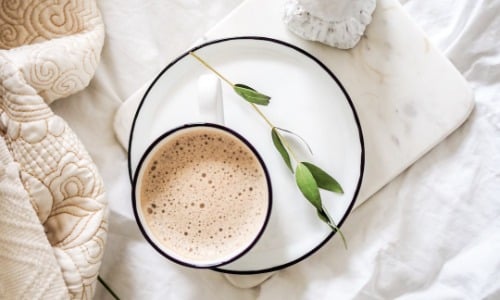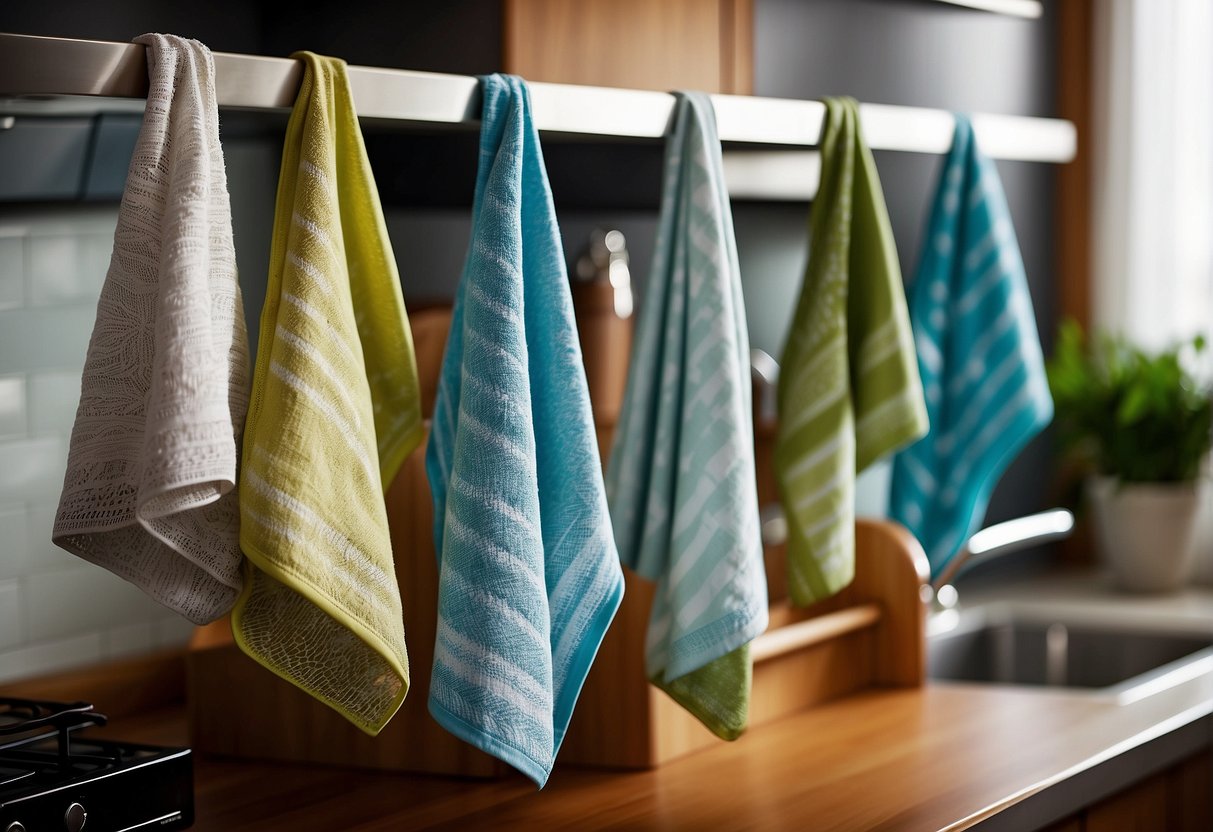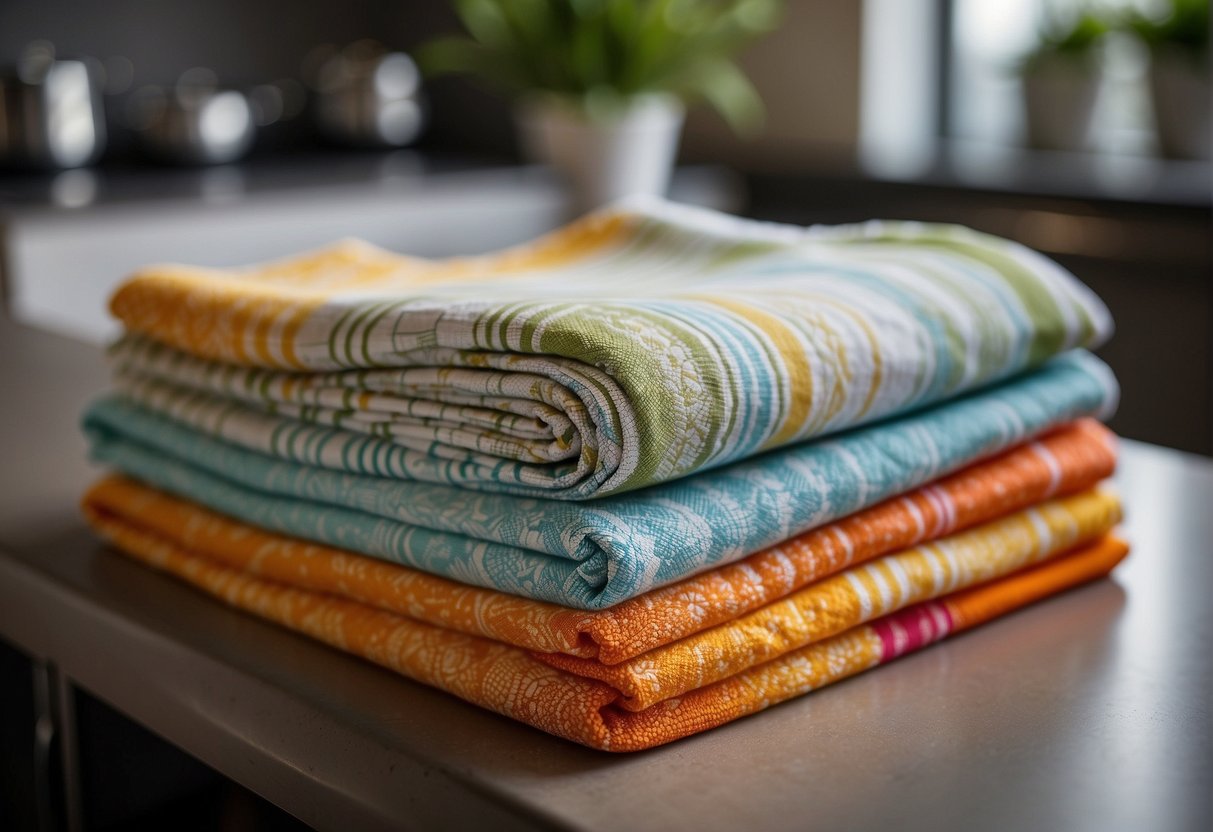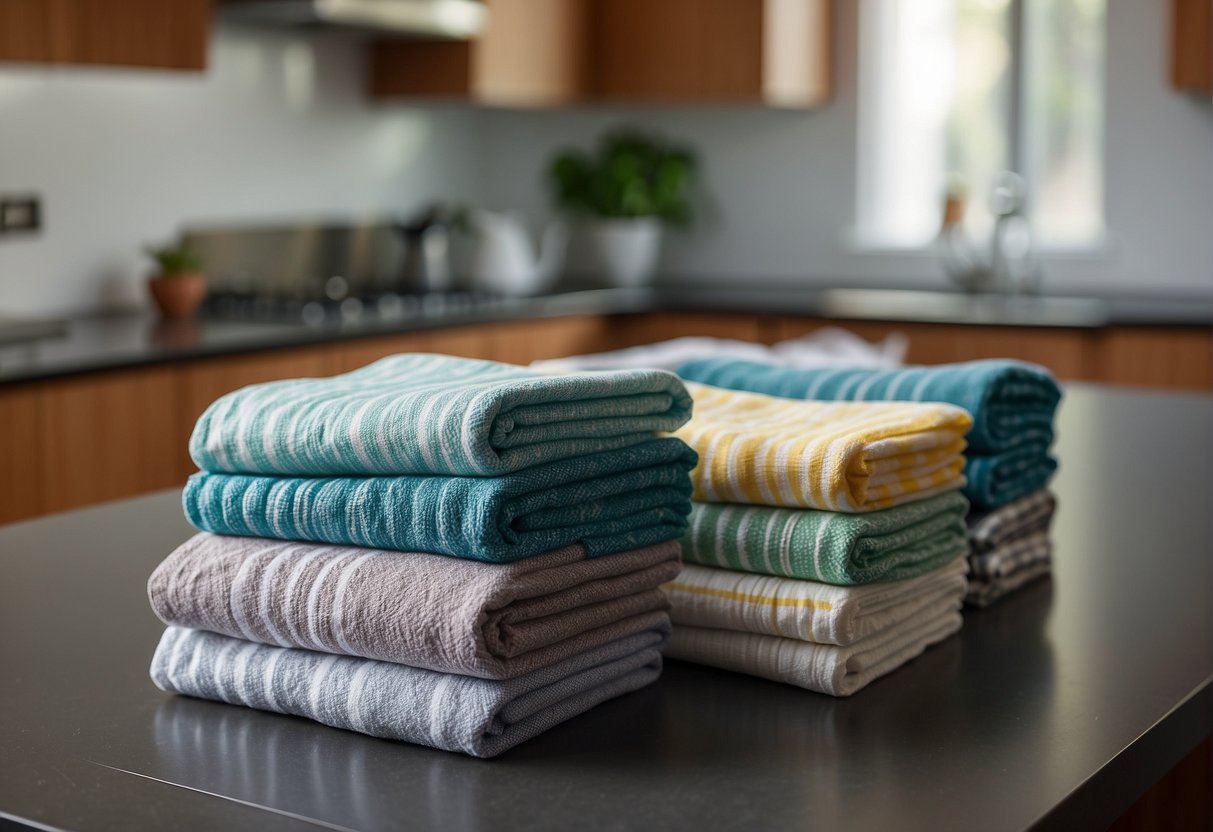In the realm of kitchen linens, you may have wondered about the difference between tea towels and dish towels. Both are common items in any kitchen, often used in similar ways, but they do have distinct purposes that can enhance your kitchen routine. A tea towel, traditionally made from linen, which is known for its superior drying ability, has a smooth texture and is most commonly used for drying delicate items like china and glassware. The aesthetic appeal of tea towels, often adorned with patterns or embroidery, also makes them suitable for covering baked goods or even as a decorative element in your kitchen.

On the other hand, dish towels are typically made from cotton or a cotton blend, making them thicker and more absorbent. These qualities make dish towels ideal for everyday tasks such as drying hands, wiping up spills, or handling hot cookware. Due to their utilitarian design, they’re built to withstand frequent use and the occasional stain, unlike the more delicate tea towel. Understanding these distinctions will help you decide which towel to reach for the next time you’re in the kitchen, ensuring you’re using the right tool for the task at hand.
Materials and Fabric Types
Tea towels and dish towels come in a variety of materials, each with unique properties that suit different kitchen tasks. You’ll find that absorbency, durability, and care requirements may vary depending on the fabric type.
Cotton and Linen
- Cotton:
- 100% Cotton: Known for its superior absorbency and softness. Ideal for drying dishes and hands.
- Organic Cotton: Offers the same benefits as regular cotton but is grown without harmful chemicals, making it an eco-friendly option.
- Linen:
- Highly durable and even stronger when wet. It dries quickly, which helps to prevent the buildup of bacteria and smells.
Terry Cloth and Synthetic Fibers
- Terry Cloth:
- Made from cotton or cotton blends, terry cloth is looped on one or both sides, creating a large surface area that’s excellent for absorbing moisture.
- Synthetic Fibers:
- Often used in combination with natural fibers to enhance characteristics like drying time and durability. However, they might not be as absorbent as pure cotton or linen.
Uses and Functionalities

Tea towels and dish towels both have a place in the kitchen, but their uses can vary. Tea towels are traditionally made of linen or cotton with a flat weave, which makes them less absorbent but great for certain tasks. Dish towels are typically terry cloth, designed to be more absorbent for drying dishes effectively. Understanding their functionalities can help you use them more effectively in your everyday tasks.
Kitchen Tasks
- Drying Dishes: Dish towels, with their thick terry cloth design, are highly absorbent and ideal for drying dishes quickly, leaving no water spots.
- Drying Hands: It’s essential to have a towel that can dry hands efficiently. Both dish towels and tea towels can serve this purpose, but dish towels might do the job slightly quicker due to their absorbency.
- Cleanup: When you need to clean up spills, a dish towel’s absorbency is your ally. In contrast, tea towels are more suitable for less messy tasks such as covering food or gentle drying.
Decorative Purposes
- Design: Tea towels often come in a variety of designs and can be used to add a decorative touch to your kitchen.
- Versatility: Use tea towels as napkins or placemats during meal service for both functionality and a dash of style.
- Kitchen: Beyond their practical uses, both types of towels can contribute to the kitchen’s aesthetic, with tea towels especially being available in numerous designs to match your decor.
Additional Uses in the Home
- Efficient: Tea towels are not only for the kitchen; they can be useful for lining serving baskets or as makeshift pot holders in a pinch.
- Specific Needs: Depending on your activity, you might prefer a tea towel over a dish towel. For example, tea towels are less likely to leave lint on glassware.
- Care: Regular laundering is vital as both types of towels can harbor bacteria. It’s best to wash them periodically to maintain hygiene in the kitchen.
Design, Patterns, and Aesthetics

When you choose tea towels and dish towels, you’re not only picking practical kitchen tools but also adding to the room’s personality and style. Whether you prefer a minimalist design or a pop of color, these towels offer a variety of aesthetics.
Color and Patterns
Tea Towels: You’ll often find tea towels in lighter hues and delicate patterns designed to complement your kitchen’s décor. They may present a variety of sizes, but a common dimension is approximately 20 by 28 inches.
Patterns:
- Stripes
- Plaid
- Geometric shapes
Dish Towels: These are typically bolder in color and feature more utilitarian patterns, since they’re meant for heavy-duty use. They’re often slightly larger to absorb more moisture.
Textures:
- Ribbed
- Terry cloth
- Flat weave
Embroidery and Illustrations
Embroidered Tea Towels: Your tea towels might have intricate embroidery, which can range from simple stitched borders to elaborate scenes. Embroidered elements add a touch of elegance and are often chosen to match themes like seasons or holidays.
Illustrated Tea Towels:
- Can feature hand-drawn or printed designs.
- Illustrations may vary from kitchen utensils to botanical prints, adding character to your space.
Dish Towels: Less common to have embroidery or illustrations due to their more practical nature, but when they do, it usually features simple shapes or lines to avoid distraction from their functionality.
Care and Maintenance

When maintaining your tea towels and dish towels, keeping them clean and preserving their qualities such as durability, absorbency, and softness is essential. Here’s your how-to guide for care:
- Washing: It’s advisable to launder your towels separately to prevent the transfer of food odors and stains. Use warm water and a mild detergent. For tea towels used for drying dishes, a cooler setting can help maintain lint-free quality. Remember to avoid bleach and fabric softeners as they can reduce absorbency and cause damage over time.
- Drying: After washing, shake out your towels to keep them soft and smooth. You can tumble dry on a low setting or hang them to dry. This helps prevent shrinkage and maintains their shape.
- Frequency: Wash your tea and dish towels after every 1-2 days of use, especially if they become damp or soiled. This avoids bacterial growth and maintains hygiene.
| Towel Type | Maintenance Tip |
|---|---|
| Tea Towel | Iron on a cool setting if needed to maintain a crisp appearance. |
| Dish Towel | Regular washing keeps them absorbent and fresh. |
- Storage: Once dry, fold your towels and store them in a dry, airy space to prevent mildew and ensure they are ready for their next use.
With proper maintenance, your towels will stay absorbent, soft, and long-lasting. Be kind to your towels, and they’ll be generous in their service to you.
Cultural and Historical Significance
In exploring the rich backgrounds of tea towels and dish towels, you’ll uncover distinct historical roots. These fabrics are not just for drying dishes but hold stories of tradition and practicality.
Tea Towels in England
Tea Rituals: You might find it charming to learn that the tea towel originated in 18th century England as an accompaniment to tea ceremonies. Initially, these cloth pieces served as napkins or buffers to protect delicate china and absorb spills while showcasing elegance.
- Gifting: It became customary to embroider them with exquisite designs, making them popular as gifts, especially during holidays and family gatherings.
American Flour Sack Towels
Innovative Repurposing: During the 19th and 20th centuries, Americans turned flour sack towels, originally used to hold flour or animal feed sacks, into versatile hand towels.
- Economical History: These towels tell a story of resilience. Households, during hard times, would reuse the fabric from these sacks, embodying a creative, economical approach to household items.
With each type of towel, the fabric’s journey from a utilitarian article to a piece enriched with cultural significance shines through its historical usage.
Choosing the Right Towel for Your Needs
When selecting between tea towels and dish towels, it’s essential to consider their differences in absorbency, texture, size, and typical uses to ensure you pick the towel that meets your specific kitchen needs.
Comparing Absorbency and Texture
Tea Towels
- Material: Often made of linen or a linen-cotton blend, tea towels are designed for drying dishes and fine china without leaving lint or scratches.
- Texture: They’re typically less fluffy than dish towels, with a flat weave that lends itself to polishing surfaces to a shine.
- Absorbency: While they are absorbent, they may not be the best choice for heavy-duty drying or soaking up large amounts of liquid.
Dish Towels
- Material: Generally crafted from terrycloth or cotton that’s loop-woven, dish towels are meant to be highly absorbent.
- Texture: They feel soft to the touch and are designed to handle large amounts of water, making them ideal for drying pots and pans or wiping up spills.
- Absorbency: Excellent for tasks that require soaking up water quickly and efficiently thanks to their thicker, more luxurious texture.
Considering Size and Use Cases
Tea Towels
- Size: They’re usually larger than dish towels, which makes them versatile for a variety of tasks beyond just drying dishes, such as wrapping baked goods to keep them warm or using as a makeshift tray cloth.
- Uses: They excel at tasks that require precision without leaving behind residue, like covering proofing bread or insulating a teapot to keep the contents warm.
Dish Towels
- Size: Dish towels are often smaller and more squared in shape, perfect for hand-drying dishes or wiping countertops.
- Uses: Their softness and absorbent qualities make them suitable for recurrent, heavy usage in tasks such as drying hands, mopping up spills, or grasping hot cookware (thanks to their insulating properties).
By keeping these factors in mind, you can choose the most suitable towel—whether it’s a tea towel or a dish towel—for the specific tasks you need to accomplish in your kitchen.
Frequently Asked Questions
In this section, you’ll find clarification on the differences and uses of tea towels and dish towels to help you decide which is suitable for your kitchen tasks.
Can I use any kitchen towel as a substitute for a tea towel?
While you can use different kitchen towels for various tasks, a tea towel’s lint-free quality makes it the preferred option for drying clean dishes and polishing glassware, so substituting it may not yield the same results.
What are the common uses for a tea towel?
Tea towels are versatile: they dry dishes effectively, are perfect for covering bread dough, or can be used to line a serving basket. Their decorative designs also allow them to be draped over tea trays or used as quaint kitchen accents.
Is there a reason why using tea towels might not be recommended in some cases?
Tea towels aren’t recommended for tasks that require high absorbency, like wiping up large spills, as they are thinner and less absorbent compared to terrycloth dish towels.
How do tea towel materials vary and which are best for drying dishes?
Tea towel materials include linen, which is durable and dries quickly, and cotton, known for its absorbency and soft feel. Linen tea towels are particularly good for drying dishes as they leave fewer streaks and less lint.
What are the standard dimensions of a tea towel?
Standard tea towels usually measure around 18 by 28 inches, giving them enough surface area to handle a rack of dishes or a batch of homemade rolls waiting to rise.



